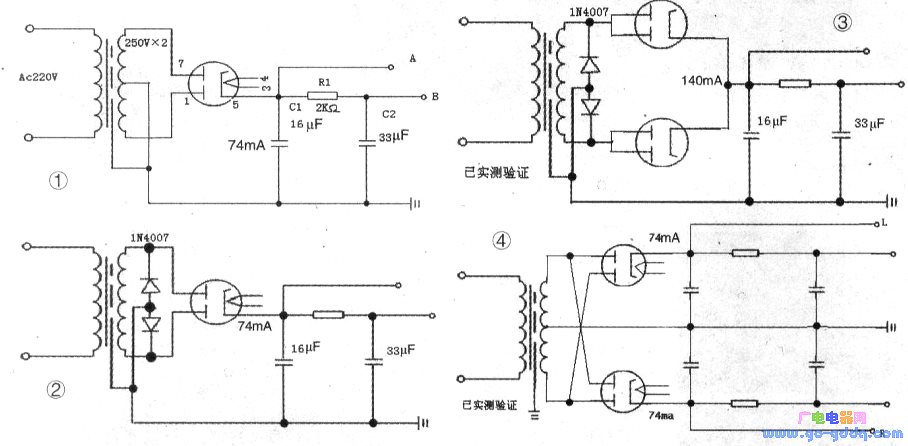Figure 1 shows a typical full-wave rectification circuit. Point A is the anode of the power amplifier tube, while point B represents the preamplifier stage. The primary winding of the output transformer functions as a filter inductor, and a 20μF filter capacitor is sufficient to eliminate hum, even when using a 10μF capacitor. This setup ensures stable power delivery without noise. In Figures 2 and 3, a bridge rectifier is necessary because the transformer does not have a center tap. However, the high internal resistance of the vacuum tube and the significant voltage drop make it unsuitable for direct bridge rectification. To address this, two 1N4007 diodes and a 624 resistor are used to form a bridge rectifier, which helps reduce inefficiencies and improves overall performance. Figures 4 and 5 are designed for power transformers that do not provide a 5V filament supply. Figure 4 is ideal for dual-channel power amplifiers, where both power supplies are well-matched in terms of parameters. The output current in Figure 5 is similar to that in Figure 3 but higher than that of a single 5Z4P rectifier. Additionally, the heating power of the two tubes used in this configuration is less than 8W, which is more efficient than the 10W of a 524P tube.
Hydraulic Power Unit (HPU) is a critical component in many industrial and engineering systems that convert mechanical energy into hydraulic energy. There are several types of HPUs, each designed to meet specific requirements and applications. Here's an overview of some common classification.
Hydraulic Power Unit,Gas Powered Hydraulic Power Unit,Portable Hydraulic Power Unit,Electric Hydraulic Power Unit Wuxi Jinle Automobile Motor Factory , https://www.wxjldj.com
